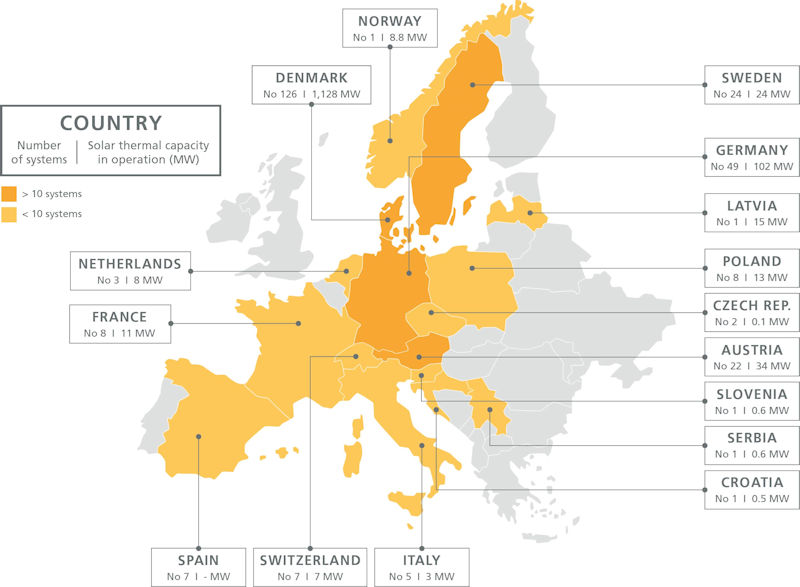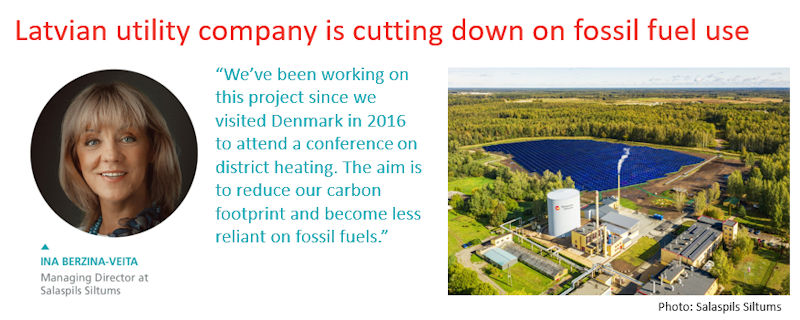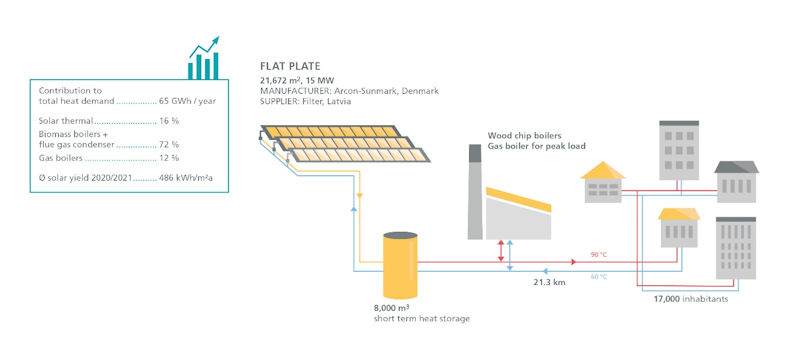Posted: June 27, 2023

(Chart: IEA SHC Task 55)
Among the 6,000 cities and towns in Europe with district heating, 266 already feed solar heat into their grid. For municipalities that plan to expand and develop new district heating systems to reduce their dependency on fossil fuels the IEA SHC Task 68 team has developed a solar district heating info package. The 45-page presentation answers the key questions that city officers will have when considering solar heat as part of their energy infrastructure planning. Together with Euroheat & Power and the Covenant of Mayors, Task 68 experts organized three webinars, which shed light on the topic of SDH from different angles.
“The Signatories of the Covenant of Mayors learned from the info package how some cities have successfully implemented solar district heating projects and they received tips and tricks for the planning and the tendering process,” said Julien Joubert, Project Manager from Covenant of Mayors Office. They also benefited from the hands-on experience of local utility companies and municipalities regarding project development. One illustrated showcase project is the 15 MW solar district heating plant with 1,720 collectors near Riga in Latvia (see below).
The info package and the recording of the three webinars are available online for further usage. Altogether more than 250 participants profited from the live webinars between March and May 2023.
Find the key links here:

The Latvian utility company Salaspils Siltums has already gone through the process of modernization towards almost complete independence from natural gas in the last 10 years. The Managing Director Ina Berzina-Veita shared her experiences at two of the webinars. “We had 100 % very old infrastructure from the former soviet times back in 2011 and we were fully dependent on fossil fuels,” she said, describing the starting point. “We first increased the efficiency of the system – so you have to check everything from the client to the heat production”, she added. The further steps were then the purchase of a 7 MW wood chip boiler in 2012, followed by a flue gas condenser in 2015 and a 15 MW solar district heating plant in 2019 with a total active collector area of 21,762 m2.
It needs a lot of courage to follow this path, confirmed Berzina-Veita. What convinced her was the fact that Latvia, despite its northern location, has better solar radiation than many sites in Denmark, where more than 120 cities and municipalities are already using solar district heating.
The solar heat plant in Salaspils contributed 16 % in the first years after commissioning. In the meantime the sun covers 20 % of the annual heat demand in the local district heating grid. The reason for the improvement lies in the optimized usage of the multi-day storage volume of 8,000 m3. If the weather forecast is good and sunny days are expected, the storage is emptied and reserved for the solar energy to come. However, if rainy weather is forecast the storage is charged using the biomass boiler, which allows a longer run of thisboiler without interruption.
The good news for the customers: The clients of Salaspils Siltums profit from lower heat costs compared to many other district heating utilities in Latvia, with the result that more and more clients want to connect, said Berzina-Veita. As President of the Latvian District Heating Association, she has been campaigning for the spread of solar heating in her country for eight years. A few small SDH pilot plants have already been set up.

Scheme and key figures for the district heating plant in Salaspils, Latvia. Source: IEA SHC Task 68
Websites of organizations mentioned in this news article: